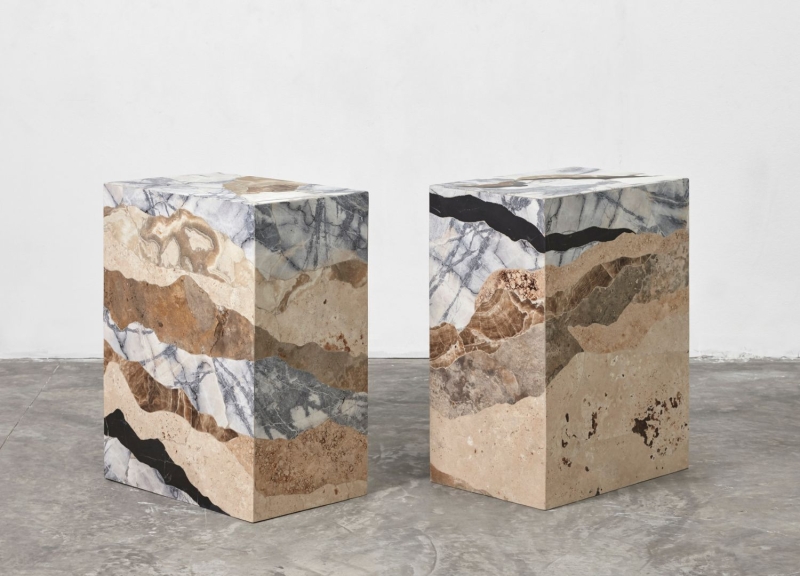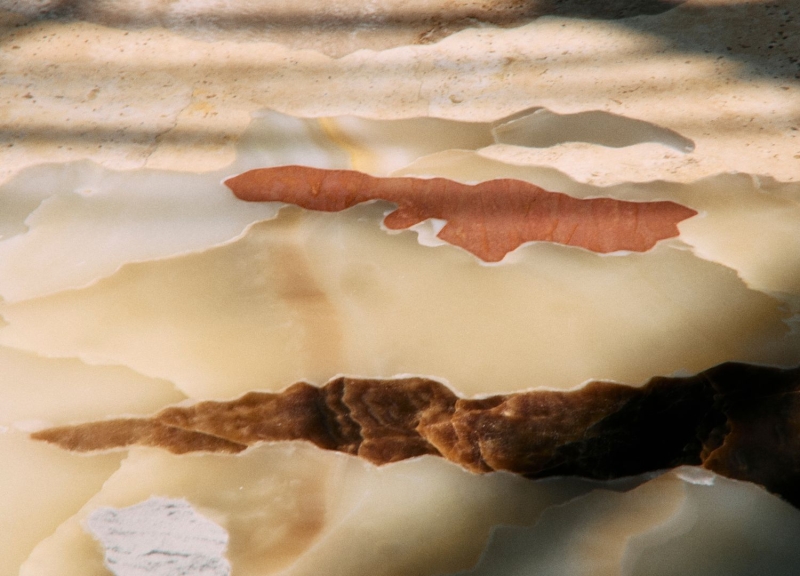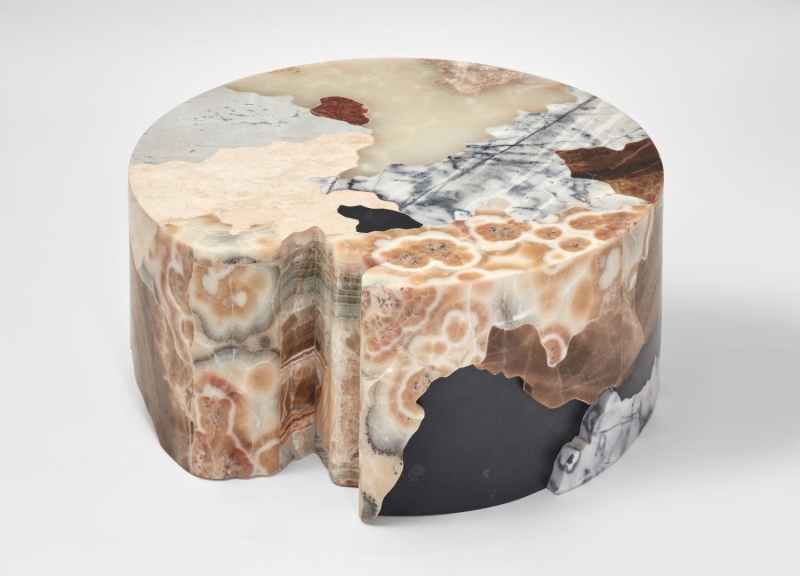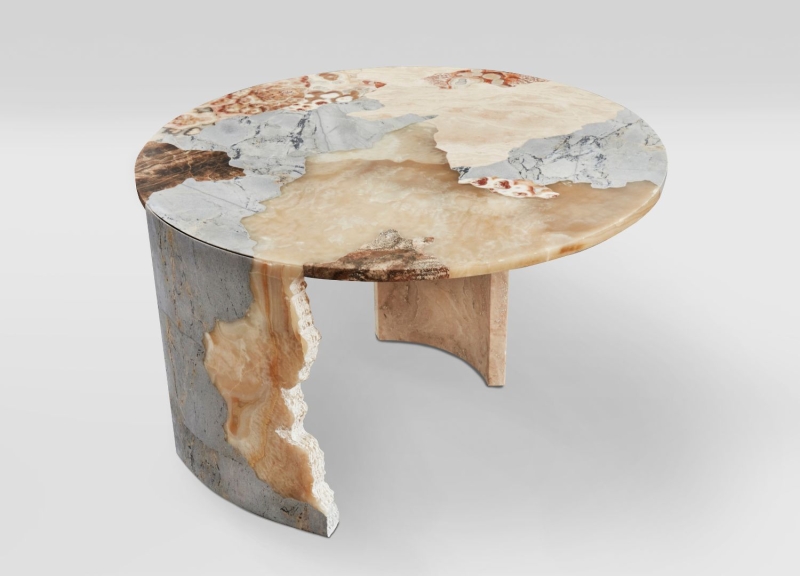Map of Soil is a series of layered tables and surfaces, rooted in the Peruvian landscape and designed by RF Studio, reaffirming how design can reflect a country’s condition – its materials, its fragility, and its contradictions – through a powerful, mirrored narrative.
Primitive, raw, ancestral. Like a sculpture rising from the earth, colorful and powerful, as if echoing a deep, archaic connection with land and identity. The work of RF Studio moves along this line: tying together tradition and origin, history and matter. Rooted in Peru, their research literally brings soil to the surface – turning earth into texture, pigment, form.

Ma of Soil at Galerie Philia, 2025
This is how Mapa de Suelo (Map of Soil) was born: a series of layered tables and surfaces where the materiality of Peruvian ground becomes a tool to read the territory, to interpret it through experimentation, in a space suspended between art and design. It’s an ongoing trajectory for Rafael Freyre, founder of RF Studio. His practice, somewhere between experimental design and site-specific architecture, explores the relationship between human habitat and natural ecosystems, blending biodiversity, ancestral practices, and artisanal gestures. Each piece is unique, handmade, and rooted in a specific landscape.

Map of Soil, Focus on Table n°7
More than ten years ago, Freyre began working on interior design objects that reinterpreted the lithic heritage of Peru through a contemporary lens. Mapa de Suelo draws inspiration from pre-Columbian civilizations and their intimate connection with the landscape. It’s a tribute to the history and diversity of Andean stone – its layers, textures, colors – and to the extreme precision required to fit one block to another, as in Inca walls.

Map of Soil, Strata n. 1
The series was born out of a visual and geological investigation of the Andes and the Peruvian Amazon. These two lenses – seen from above and cut from within – generate abstract maps of the territory. The aerial view captures marks, fractures, and accidents on a flat horizontal surface, and the geological cross-section reveals the vertical stratification of time, sediment, and transformation. Together, they give back a complex, almost sacred image of place: vast, layered, and alive.

Map of Soil, Table n. 6
But understanding the territory also means acknowledging its fragility and contradictions. The process began with research into the extractive systems of Peruvian stone. Today, most large-scale extraction is impossible due to outdated technologies and regulations; instead, stone is cut in small fragments by artisans working along the country’s different altitudes – using traditional, often improvised methods.

Map of Soil, Process on Table n. 7
This observation became a starting point, and Freyre and his team, rather than working against the limits of the system, chose to build with them. By assembling small discarded fragments – waste for large-scale industry – they began reconstructing a symbolic geology, finding a way to restore value to what’s left behind, and at the same time engaging in a dialogue with the craft traditions of the territory. The result is not just formal, but a cultural, ethical, political definition of what design can do and narrate nowadays, when it has a vision.

Map of Soil, Geology of the Diverse 2
Central to the project has been Roberto Román, a master stonemason from Ayacucho, who, with his family, has been working with stone for three generations. His workshop, in the Huaycán district east of Lima, is close to the quarry where RF Studio sources its granite. Through the hands of this master, every piece is shaped, one fragment at a time, following irregular geometries and chromatic sequences inspired by nature.

Map of Soil, Table n. 5
In Mapa de Suelo, every table becomes a landscape, and every surface tells a story of time and matter, while the process behind it maps a network of relations – between territory and people, creating heritage and knowledge. It’s not a nostalgic return to tradition, but a contemporary act of resources, and meaning reappropriation. A quiet gesture of resistance against standardization and oblivion.

